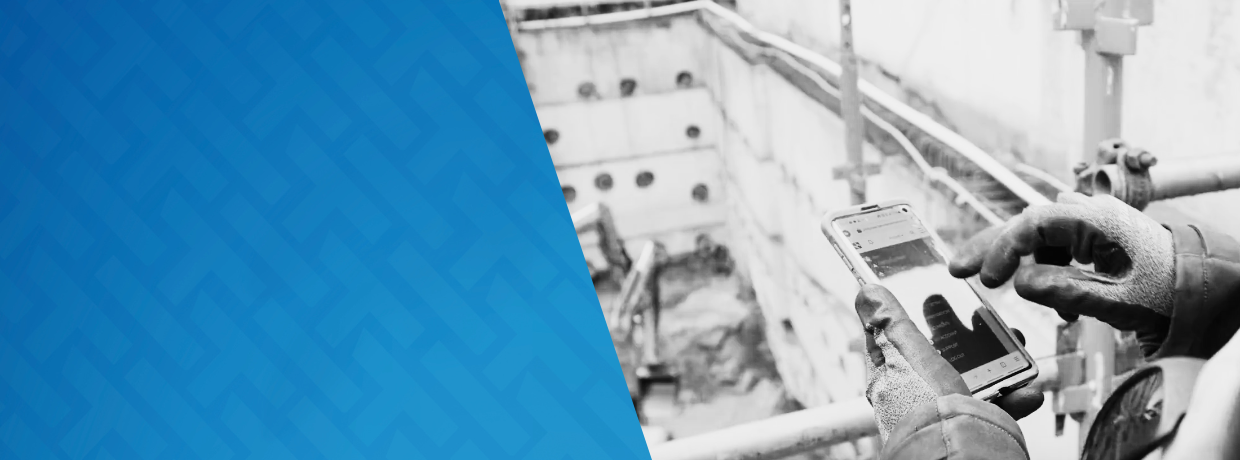|
New research from the CSRA shows the real costs of neglecting job site safety, from accidents to the bottom line. See how this could change the industry's approach to safety and help firms protect workers, attract talent, and stay competitive. |
What's Inside |
Research from the Construction Safety Research Alliance aims to set a global standard for safety, efficiency and finance at construction companies.
As the construction sector embarks on another fiscal year, prioritizing health and safety is increasingly imperative. New industry-specific safety research and technology aims to help directors effectively optimize their financial resources and more precisely understand the economic impacts of safety strategies.
Shifting the Paradigm
The construction industry across America is evolving quickly—especially when it comes to cutting-edge technological solutions in software and hardware, aimed at reinforcing safety protocols and yielding both operational and economic advantages. However, implementing these advancements often hinges on showing a tangible economic benefit, an issue that an innovative new initiative seeks to tackle by merging insights from academia and industry professionals.
Brad MacLean, founding chair of the Construction Safety Research Alliance, in partnership with Nathalie Moyen, a finance professor at the University of Colorado's Leeds School of Business, are two leaders for a CSRA team that is developing applied research to more effectively determine the return on investment of safety initiatives. This project introduces a rigorous, empirically based methodology for managing safety in construction, by focusing on forming a solid fiscal rationale for safety interventions, examining both immediate and enduring effects, and linking them to tangible financial outcomes. This effort is vital in creating a persuasive business-based argument for adopting safety innovations in construction, helping directors of health and safety in securing executive-level support.
The project involves four principal activities: first, pinpointing individual safety measures or safety interventions; second, evaluating their immediate or short-term effects; third, understanding how these short-term effects translate into long-term outcomes; and, finally, connecting these outcomes to the overall value of the firm.
This strategy is revolutionary, shifting from a tactical to a strategic mindset, with decisions rooted in specific financial returns on safety measures, in line with broader business development goals.
Risks
Reflecting on safety data, including accidents and near-misses, is a regular practice that highlights the dual risks—reputational and financial—that construction firms face. The high-risk nature of construction work, characterized by activities such as working at height, in challenging lighting conditions or with hazardous materials, makes safety a top priority, both morally and financially.
The repercussions of safety lapses are substantial. Incidents can lead to OSHA fines, legal actions from injured workers, equipment replacement costs and the loss of contracts, to name just a few direct impacts.
Additionally, in the current tight labor market, the impact on employee morale and employer brand can't be overlooked. The workforce has changed dramatically in recent years–health and safety is now at the forefront of any construction job, no matter how menial.
Construction firms are well versed in health and safety measures, what they need to do and why, but more could always be done to ensure everyone is well versed in the economic value of those solutions and that they are embraced at every level of leadership.
While people safety is paramount, safety lapses can have far-reaching effects on a company's operational efficiency and long-term profitability. Frequent accidents can disrupt project timelines, leading to delayed deliveries and strained client relationships. This not only affects current contracts but can also hamper the ability to secure future ones, as clients increasingly prioritize safety performance when selecting partners.
Protecting Your Brand
In today’s environment, where employee wellbeing and corporate responsibility are increasingly under public scrutiny, the safety culture of a company has become more crucial than ever. Companies known for high safety standards are not only viewed more favorably in terms of brand perception, but they also tend to attract better talent and retain employees longer. And talent attraction is vital for any industry but particularly for the construction sector given the key challenges it faces.
For example, the sector is increasingly adopting new technologies like BIM, drones and automated machinery. This technological shift requires a new skill set, and attracting talent capable of working with these advancements is crucial for companies to stay competitive and innovative.
Younger, more technologically adept workers can also contribute to improved safety and efficiency on construction sites. They bring fresh perspectives and are often more receptive to new safety protocols and technologies that can reduce accidents and increase efficiency.
Although the role of advanced technology in enhancing workplace safety is also becoming more pronounced, construction firms need to recognize their potential to make their jobs easier and safer. For instance, the integration of tools such as AI for risk assessment, wearables for monitoring worker health and safety, and software for incident tracking and reporting are examples of how technology is not just supporting safer work environments but playing a meaningful role in the creation of them.
Revolutionize
Traditionally in the United States, safety measures in the construction sector were primarily compliance driven. Today, the emphasis has shifted toward efficiency and risk management, propelled by the complexity of modern projects which demand enhanced safety solutions. In this era, technology plays a pivotal role, extending its value beyond safety to encompass overall operational improvement. Tools, both hardware and software, are instrumental not just in bolstering safety but also in streamlining operations, thus enabling contractors to manage risks proactively, reduce administrative workload onsite, and enhance worker productivity and project efficacy.
For example, digital safety platforms are redefining standard procedures such as employee induction and hazard control. Their implementation marks a significant transformation in workplace safety management, offering automation and real-time tracking and reporting of safety incidents. This ability to report incidents instantaneously facilitates swifter responses to hazards and may decrease accident likelihood. Additionally, the data amassed via these platforms can be scrutinized to identify trends and foresee potential risks, fostering a proactive rather than reactive approach to safety.
The CSRA's research will provide safety directors and strategists with empirical evidence to pinpoint the most effective safety measures, helping management to make more informed investment choices. By delivering solid data on the efficacy of different safety interventions and a protocol for testing new interventions, this research assists construction firms in allocating resources for optimal impact, a critical consideration in an industry grappling with balancing safety priorities against budget limitations.
The Global Application
Once completed, the CSRA's work will offer comprehensive advice on effective safety measures, including how workplace injuries significantly affect company value. This methodology, comparable to clinical trials in healthcare, aims at safeguarding both employee welfare and organizational health.
By demonstrating the financial merits of safety measures, the project not only promotes safer work environments but also reports on profitability impacts, ushering in a new phase in construction safety, where ethical obligations and economic interests are scientifically documented. This approach will help establish a new benchmark for safety protocols in the United States.
Although the primary focus is on elevating safety standards in North America, the outcomes of this project hold the potential to redefine global safety norms. Leading North American construction companies, often involved in global projects, can disseminate these innovative safety insights worldwide, establishing a global standard in construction safety and operational efficiency.






